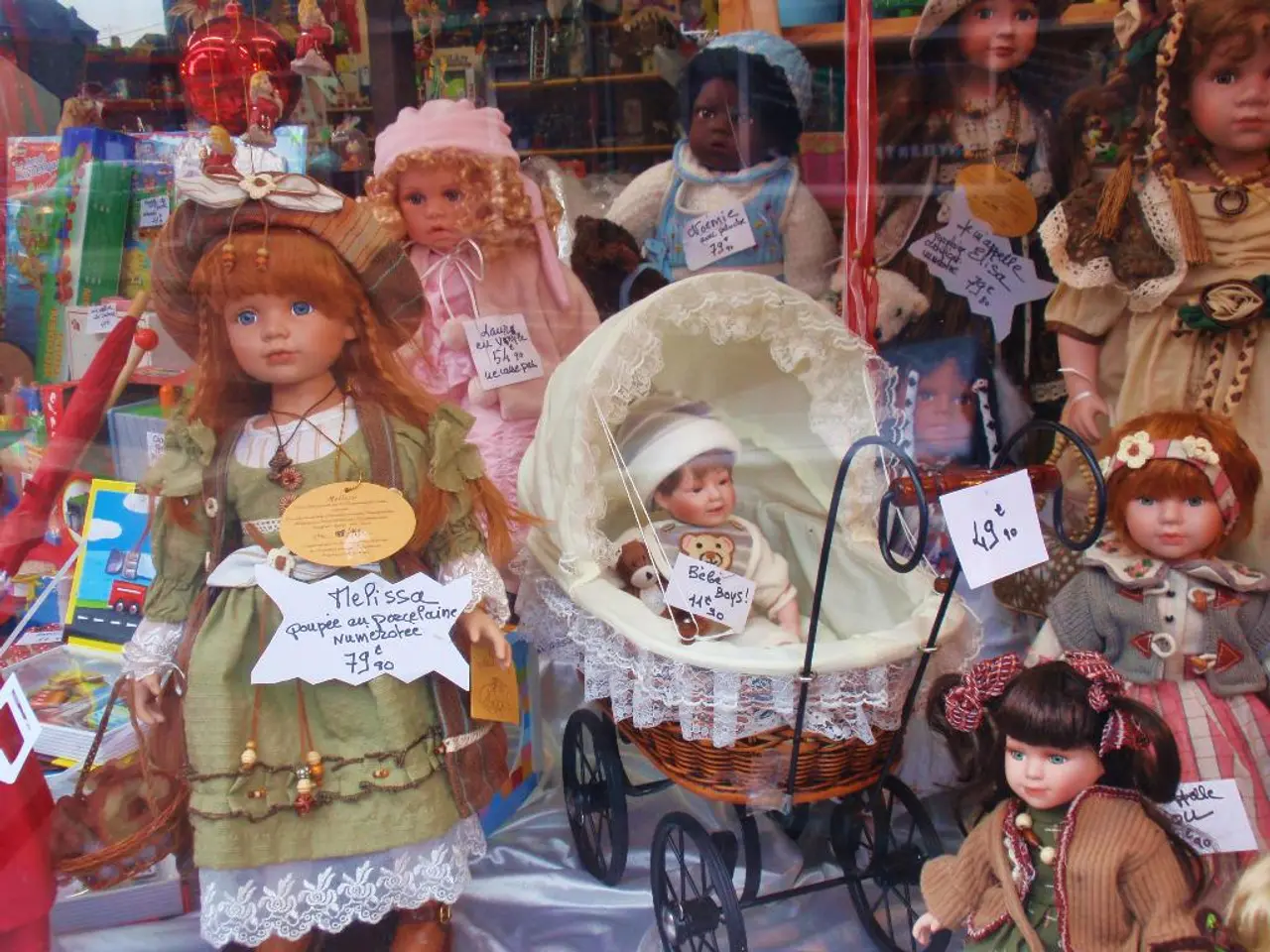Photoshopped Reality: Margot Robbie undergoes excessive digital retouching for the front cover of US Vogue magazine
In the world of fashion and entertainment, the upcoming Barbie movie, set for release on July 21, has been generating quite a buzz. Starring Ryan Gosling, America Ferrera, and Margot Robbie, the film is expected to defy expectations, with a potential feminist message implied by its tagline "She's everything. He's just Ken."
However, the Vogue cover featuring Margot Robbie as various key eras in Barbie's history has become a contentious topic. The cover, shared by US Vogue in anticipation of the movie's release, features extensive use of Photoshop, altering details such as Robbie's nail beds, skin texture, and thigh gap.
Gabriella Karefa-Johnson, a New York-based editor and stylist, was responsible for the shoot's set design and props. She transformed a Miu Miu knit cardigan into something on-brand for Barbie, and Robbie wore looks from Maison Margiela as cowgirl Barbie and Versace for the cover shot.
The excessive editing on Robbie's cover has been a point of debate. While some argue it is thematic and plays into Robbie's character in the movie, others find it overly edited. Critics argue that overuse of Photoshop can create unattainable beauty standards, contributing to body dissatisfaction and negative self-image.
Others feel that heavy editing detracts from the authenticity of the subject and the message the magazine aims to convey. There's also a debate about whether extensive editing compromises the artistic integrity of photography and the work of models like Margot Robbie.
The dollification of a real life woman from Vogue somewhat undermines the potential feminist message of the Barbie movie. Some argue that it reinforces the very beauty standards the film is intended to challenge.
An alternative approach to the Barbie cover could have involved exploring the use of plastic in fashion, as seen in LOEWE's Polly Pocket clothes. This approach might have been more in line with the movie's themes and could have sparked a more meaningful conversation about the impact of plastic on our environment.
The extensive use of Photoshop on the Barbie cover may take away from the moves towards body positivity some parts of the industry have been slowly undertaking. As conversations surrounding idealized and unrealistic beauty standards continue, the debate over Vogue's Margot Robbie Barbie cover will undoubtedly persist.
- The Barbie movie's anticipated feminist message clashes with the controversial Vogue cover featuring Margot Robbie, as the cover's heavy use of Photoshop has been critically questioned for promoting unattainable beauty standards and potentially undermining the movie's feminist message.
- As the Barbie movie challenges traditional beauty standards, the debate over the excessive editing on the Margot Robbie cover in Vogue continues, with some arguing it compromises the magazine's intent and detracts from the overall conversation about body positivity and plastic use in fashion.








